 OK, so here’s the deal (sort of) with those last couple of ambiguous posts. I’m trying to take advantage of some of the newest features of WordPress (which seem largely intended to keep WordPress relevant in a post-Tumblr world), especially the ability to create different post formats, which, in addition to the “standard” format, include asides, links, galleries, status(es), quotes, and images.
OK, so here’s the deal (sort of) with those last couple of ambiguous posts. I’m trying to take advantage of some of the newest features of WordPress (which seem largely intended to keep WordPress relevant in a post-Tumblr world), especially the ability to create different post formats, which, in addition to the “standard” format, include asides, links, galleries, status(es), quotes, and images.
In order to get access to these new features, I’ve switched from my old, built-from-scratch custom theme to the current stock theme, Twenty Eleven, which I am currently modifying for my own nefarious purposes. (If you consider hot pink text in a whimsical retro font nefarious, which you should.) My goal is to get things fairly close to how they looked before the switch, while still gaining access of all of that new WordPress mojo.
Cool. But what I really want to do is to take all of this even a step further, and let this WordPress-based blog become my single hub for posting anything online, except I guess for photos, which I still plan to post through Instagram, because I like how the app works. (Although having those show up in the main blog content stream instead of, or in addition to, in a sidebar widget would also be nice.)
The biggest stumbling block for this grand vision, so far, is that Twitter Tools, the WordPress plugin I use for all of the Twitter integration (a.k.a. “twittergration” in my compulsive Twitter portmanteau, or “twortmanteau”, parlance) on the site, isn’t smart enough to handle these special formats in the way I’d like. It should recognize asides, and especially status(es), as such and just run them as the entirety of the tweet, without the usual “UoP:” prefix and permalink consuming precious characters.
Or, perhaps more rationally, the ability of Twitter Tools to turn tweets into posts should allow you to define the format of those tweet posts (“twosts”), so I could tell it to make all of my twosts into status(es) instead of “standard” posts. Yes, this is definitely a more rational approach, and one that makes me slightly embarrassed to have written the previous paragraph (but not enough to make me delete it). I’m very accustomed to tweeting on-the-go from my iPhone, and I’d prefer to keep using Tweetbot for that, instead of somehow trying to turn the WordPress app into my go-to tool for depositing random brain cruft onto the interwebs.
While I’m wishing for alternative methods of funneling content into WordPress, as I mentioned above it would also be super neato if I could get Instagram photos to automatically show up on the blog as image posts… which might be possible, if I were to take the time to investigate it, but one thing at a time.
The end result of all of this angsting is that my blog is currently not in a state that I intend for it to remain in for very long. It’s a work in progress (as is everything in the world that isn’t just being allowed to decay), and I suppose I can live with it for now. I have more important things to worry about at the moment, unless you’d care to make a generous donation for the ongoing care and feeding of my blog. (4 figures minimum, and that’s U.S. dollars… not pennies, wooden nickels or, um… “Star Bucks”)
Then again, maybe I’ll be able to think about all of this a little more rationally come Monday, when the Minneapolis Public Schools’ winter break is finally over.
